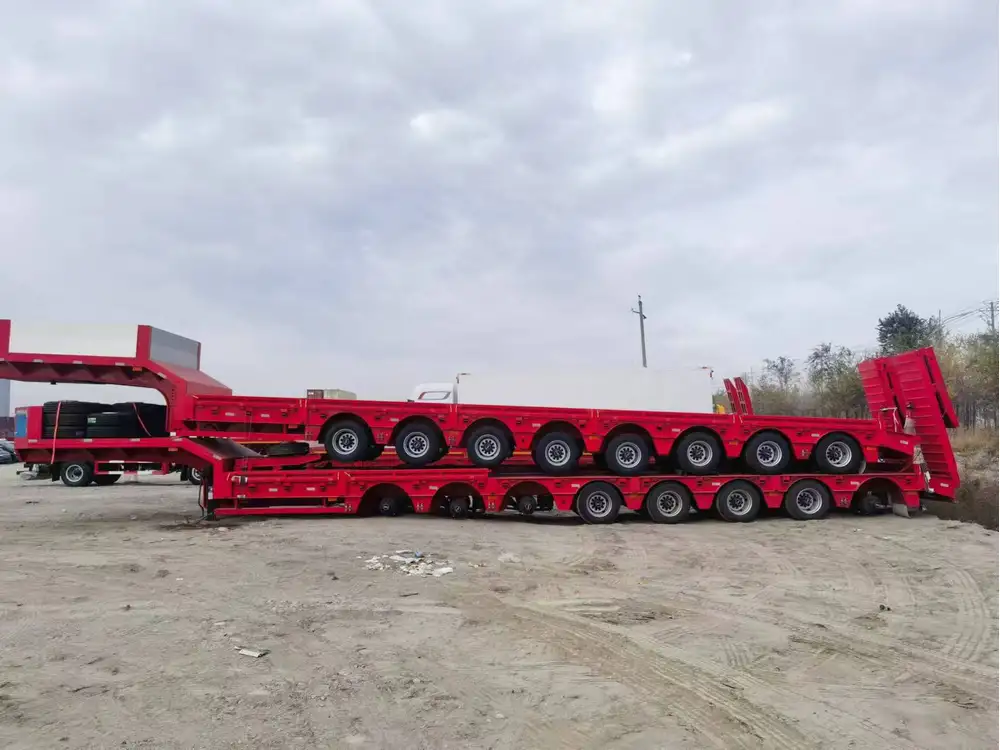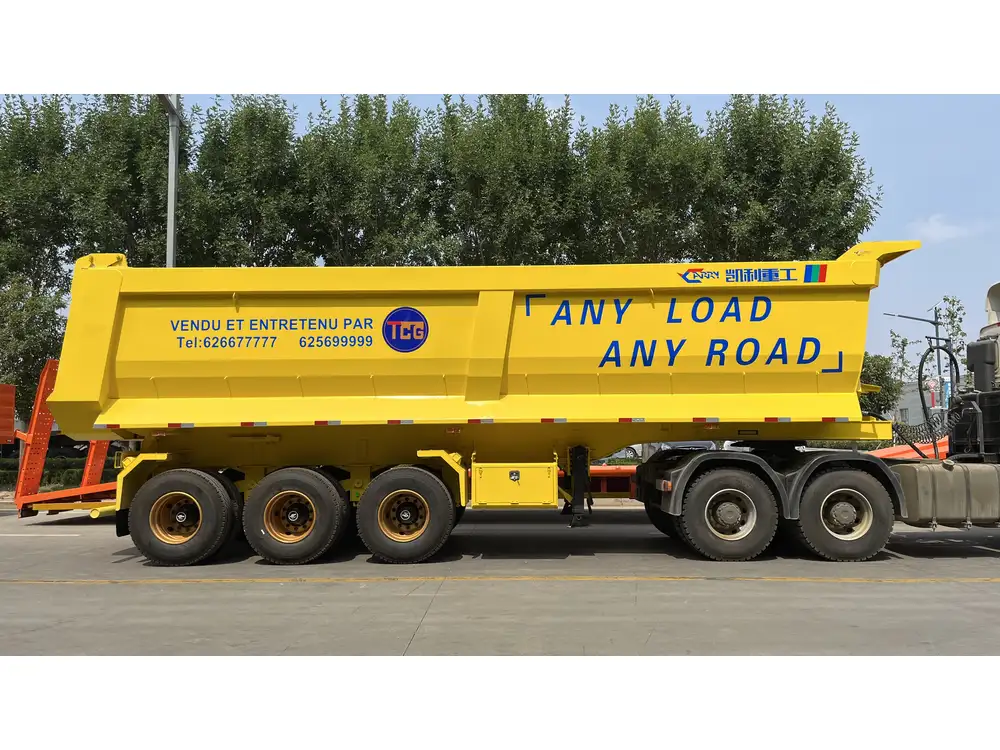Understanding Skeletal Semi-Trailers
Skeletal semi-trailers are specialized equipment designed for efficient transportation, particularly of containers. They possess a distinct structure that merges strength with functionality, allowing them to transport heavy goods while maintaining a light overall weight. The inherent flexibility of skeletal trailers makes them indispensable in logistics and transportation industries, particularly for companies dealing with port operations, intermodal transport, and heavy loads.
Key Features of Skeletal Semi-Trailers
To fully appreciate skeletal semi-trailers, it is essential to explore their defining features:
| Feature | Description |
|---|---|
| Lightweight Construction | Made from high-strength steel or aluminum, optimizing payload capacity while reducing weight. |
| Container Compatibility | Designed to accommodate standard shipping containers (20, 40 feet), ensuring versatile use. |
| Open Frame Design | The skeletal structure enables easy loading and unloading, increasing operational efficiency. |
| Enhanced Stability | Equipped with robust axles and suspension systems providing stability during transit. |
| Customizable Options | Available in various configurations to meet specific business needs, including height and wheelbase variations. |

Benefits of Using Skeletal Semi-Trailers
Utilizing skeletal semi-trailers offers numerous advantages, elevating logistical operations to new heights:
1. Increased Payload Capacity
One of the most significant benefits of skeletal semi-trailers is their lightweight design, which allows for maximized payloads. With regulations for gross vehicle weight limiting the total load, the inherent lightness of skeletal trailers enables companies to transport more cargo without surpassing legal limits.
2. Versatility in Transportation
Their ability to accommodate different container sizes renders skeletal semi-trailers incredibly versatile. Businesses can switch seamlessly between container types, avoiding the need for multiple trailer models. This versatility extends the functional range, from transporting goods across city limits to facilitating international trade.

3. Improved Fuel Efficiency
While the lightweight nature of skeletal trailers results in a higher payload capacity, it simultaneously leads to enhanced fuel efficiency. A lighter trailer means that trucks consume less fuel, which not only reduces operating costs but also lessens the environmental impact, aligning with sustainability objectives prevalent in today’s logistics.
4. Ease of Maintenance
Skeletal semi-trailers feature fewer components than their fully enclosed counterparts, resulting in lower maintenance costs. The open frame design exposes critical elements, making inspections and repairs simpler and more cost-effective. This efficiency translates to reduced downtime and enhanced operations.
5. Enhanced Durability
Though light in weight, skeletal semi-trailers are constructed to withstand rigorous conditions. High-strength materials ensure longevity, while the open design reduces the likelihood of damage from impacts or harsh elements. Consequently, businesses investing in these trailers benefit from durability and reliability over time.

Applications of Skeletal Semi-Trailers
Skeletal semi-trailers excel in a wide array of applications, contributing to their popularity across various sectors:
1. Intermodal Transportation
In intermodal transport, where containers are transferred between different modes of transport (like ships, trains, and trucks), skeletal semi-trailers play a crucial role. They facilitate smooth transition between transport vehicles while ensuring that containers remain securely fastened.
2. Port Operations
Skeletal trailers are widely used in ports, where they transport shipping containers to and from vessels. Their design’s emphasis on container compatibility makes them the ideal choice for efficient loading and unloading activities, ultimately streamlining port logistics.

3. Long-Distance Hauling
For long-distance hauls, the combination of increased payload capacity and fuel efficiency provides logistics companies a distinct competitive edge. Skeletal semi-trailers enable operators to transport goods across vast distances without incurring excessive fuel costs or weight restrictions.
4. Heavy Equipment Transport
Beyond containerized goods, skeletal semi-trailers can also facilitate the transport of heavy machinery and equipment. Companies involved in construction and excavation industries utilize skeletal trailers for moving their substantial tools and equipment from one site to another.
Types of Skeletal Semi-Trailers
Various designs of skeletal semi-trailers cater to specific needs. Below is a comparative overview of the predominant types:
| Type | Description |
|---|---|
| Standard Skeletal Trailers | Basic models designed for the primary function of transporting standard containers. |
| Double Stack Skeletal Trailers | Engineered for optimal space utilization by allowing two containers to be stacked, enhancing transport efficiency. |
| Extendable Skeletal Trailers | Models that can be adjusted in length, accommodating longer loads and providing flexibility in operations. |

Factors to Consider When Choosing a Skeletal Semi-Trailer
Choosing the right skeletal semi-trailer involves several critical considerations:
1. Load Specifications
Understanding the nature of the goods being transported is key. Weight, dimensions, and the type of container are paramount in deciding the appropriate trailer configuration.
2. Compatibility with Vehicles
Ensuring that the skeletal semi-trailer is compatible with existing fleet vehicles is vital to prevent logistical challenges. Consider aspects like towing capacity and hitch types.

3. Regulatory Requirements
Different regions may have specific regulations regarding trailer dimensions and load capacities. Familiarize yourself with local laws to ensure compliance and avoid hefty fines.
4. Maintenance and Parts Availability
Opt for manufacturers supplying reliable maintenance services and readily available parts. This accessibility aids in minimal downtime during repairs.
5. Cost Analysis
Perform a comprehensive cost-benefit analysis by evaluating purchase costs against potential operational efficiency gains and maintenance requirements. This ensures a sound investment decision.

Conclusion
Skeletal semi-trailers stand at the forefront of modern transportation solutions, combining efficiency with adaptability. Their myriad benefits—from enhanced payload capacity to reduced fuel costs—make them an indispensable asset within the logistics and transportation sectors. By understanding their intricate design and varied applications, companies can make informed decisions to elevate their transportation operations.
Frequently Asked Questions (FAQs)
What is the typical lifespan of a skeletal semi-trailer?
The lifespan largely depends on maintenance and usage but can range from 10 to 20 years when properly cared for.

Can skeletal semi-trailers be used for non-containerized goods?
Yes, while primarily designed for containers, they can also transport other heavy equipment when properly secured.
What are the maintenance requirements for skeletal semi-trailers?
Regular inspections, lubrication of moving parts, and monitoring tire conditions are essential maintenance practices to ensure longevity and safety.
By taking these insights into consideration, one can maximize the benefits derived from skeletal semi-trailers, paving the way for more efficient and effective transport operations at every turn.



